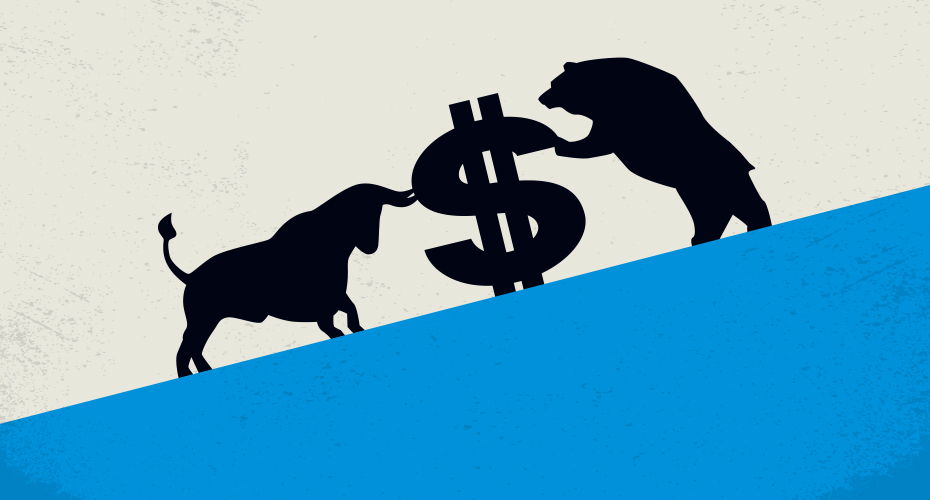Published August 9, 2021 • 6 Min Read
The full version of this article originally appeared on RBC InvestEase
Putting together a portfolio
When you take a DIY approach to investing, you decide for yourself what financial assets to include in your portfolio. You’ll have to calculate how much risk you want to take, analyze which stocks, bonds, mutual funds or exchange-traded funds (ETFs) will do well, and buy the right combination of them to match your risk objectives.
Robo-advisors like RBC InvestEase can be a great option for folks who want to invest but don’t know where to start. When you first go onto the RBC InvestEase website, you’ll be asked a few questions to determine how much risk is appropriate for you as an investor. After their team of Portfolio Advisors determine how much risk is right for you, they’ll invest your funds in a portfolio of low-cost ETFs that has the right mix of equities, fixed income and cash to match your risk profile. They’ll also review the recommended portfolio to make sure it’s appropriate for you and your objectives.
More details on how RBC InvestEase works.
Keeping balanced
When financial market conditions change, your portfolio may drift so that your investments no longer align with the amount of risk you’re comfortable with. For example, if equity markets do well your portfolio might be up (which is great!), but you may also hold more equities than is appropriate for your risk profile.
With a DIY portfolio, you’ll have to monitor your portfolio, and decide which investments to buy or sell if financial market conditions cause your asset mix to drift outside of the amount of risk you’re comfortable with. With robo-advisors, rebalancing is automated and you don’t have to think about it. Like if you invest with RBC InvestEase, their team will continuously monitor your portfolio to make sure it’s aligned with your objectives. If your asset mix gets out of whack they’ll buy or sell ETFs to bring your portfolio back in line with your goal.
Thinking through fees
There’s a cost to investing no matter how you do it. DIY investment platforms typically charge two fees: a maintenance fee for holding your account (usually a flat fee charged quarterly or annually), and commission fee every time you trade (a fee charged whenever you buy or sell a financial asset).
Robo-advisors usually charge an annual management fee on your account balance. For example, RBC InvestEase charges an annual management fee of 0.50%. To put that in perspective on a $1,000 account our management fee would be $5 a year, or about $0.42 a month.
If you own mutual funds or ETFs – whether you buy them on a DIY platform or through a robo-advisor – you’ll pay a management expense ratio (MER) to the fund provider. The MER covers the management fee, operating expenses and taxes of the fund itself. MERs can vary widely among funds, so they’re important to consider. The RBC InvestEase portfolios are made up of low-cost ETFs, with the weighted-average MER for each portfolio ranging from 0.11% to 0.23%.
Deciding how to decide
We may want to believe that we’re rational thinkers who make optimal decisions based on all the available information, but the truth is that this isn’t usually the case. Many psychologists have demonstrated that when people are faced with complex decision-making they lean on predispositions (or biases) to simplify their choices. For example, when deciding where to go for dinner do you:
a) Analyze every menu and online review for all the restaurants in your city; or
b) Think “I feel like Greek food and this Greek place is close and a friend said it was good”
Choosing option b) is the perfectly normal thing to do. The thing is, cognitive shortcuts can lead to suboptimal outcomes when it comes to investments. Folks tend to look for and notice information that confirms their existing beliefs, and ignore or undervalue information that contradicts their beliefs (this is known as confirmation bias).
In an investment context, they may only consider the positive information about an investment, and ignore any negative information. Also, we prefer avoiding losses as opposed to achieving gains. Loss aversion can lead investors to hold onto losing positions even if an investment has little or no chance of going back up. These are examples of just two of many types of biases that can influence investment decision making.
Behavioural biases can be particularly pernicious for DIY investors, who have to make their own investment decisions. With robo-advisor, like RBC InvestEase, the decision making is automated: their smart technology recommends a personalized investment portfolio, and rebalances it on an ongoing basis as market conditions change. And if you need help, you’ll also have access to real people for the support and advice you need.
Bottom line, it’s up to you! If you are an experienced investor and prefer to make your own decisions, DIY investing (like RBC Direct Investing) may be the right choice for you. If you want the convenience of an online investment portfolio that’s managed by a team of accredited portfolio managers, a robo-advisor like RBC InvestEase is a great option.
Want help deciding how to invest? Talk to one of our dedicated RBC Healthcare Specialists.
RBC InvestEase is a restricted portfolio manager providing access to model portfolios consisting of RBC iShares ETFs with each model portfolio holding up to 100% of RBC iShares ETFs. RBC iShares ETFs are comprised of RBC ETFs managed by RBC Global Asset Management Inc. (RBC GAM) and iShares ETFs managed by BlackRock Canada Limited (BlackRock Canada). RBC GAM and BlackRock Canada have entered into a strategic alliance to bring together their respective ETF products under the RBC iShares brand, and to offer a unified distribution support and service model for RBC iShares ETFs. Other products and services may be offered by one or more separate corporate entities that are affiliated to RBC InvestEase Inc., including without limitation: Royal Bank of Canada, RBC Direct Investing Inc., RBC Dominion Securities Inc., RBC Global Asset Management Inc., Royal Trust Corporation of Canada and The Royal Trust Company. RBC InvestEase Inc. is a wholly-owned subsidiary of Royal Bank of Canada and uses the business name RBC InvestEase. The services provided by RBC InvestEase are only available in Canada.
This article is intended as general information only and is not to be relied upon as constituting legal, financial or other professional advice. A professional advisor should be consulted regarding your specific situation. Information presented is believed to be factual and up-to-date but we do not guarantee its accuracy and it should not be regarded as a complete analysis of the subjects discussed. All expressions of opinion reflect the judgment of the authors as of the date of publication and are subject to change. No endorsement of any third parties or their advice, opinions, information, products or services is expressly given or implied by Royal Bank of Canada or any of its affiliates.
Share This Article






